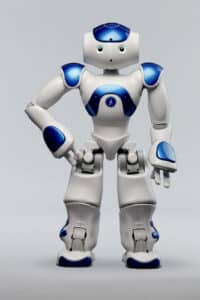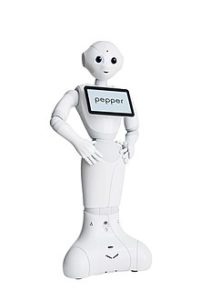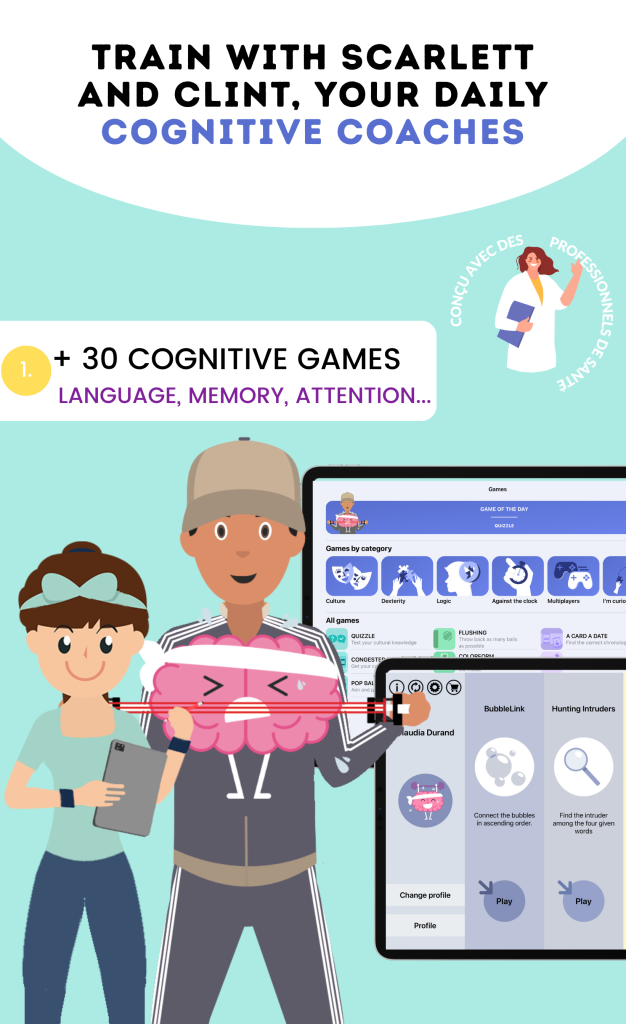Technological innovation is evolving at such an incredible speed today, robots are practically part of human life. In the most technologically advanced countries, real-life experiments are being conducted, such as tests of assistance robots or companion robots for the elderly. But what could these robots bring to the elderly in the future? These are the questions that the teams at Senioriales regularly ask themselves.
A Truly Innovative Technology
Today, the field of robotics is in full evolution. Whether in the United States, Japan, or even France, truly advanced and revolutionary experiments are often conducted. Today, we can already count robots equipped with artificial intelligence capable of doing an incredible number of things like singing, recognizing a face, singing, and even moving around. All these capabilities could allow seniors to have an easier life and facilitate the implementation of more personalized monitoring.
Robots for Seniors

A robot named Nao has been equipped with a program called Zora that allows it to work as a coach for seniors. Nao is equipped with numerous sensors that allow it to see, hear, and move around without any problems. It adapts to the needs and desires of each person it takes care of. For example, encouraging a resident or patient to sing or even do their therapeutic exercises, which is very practical in the treatment of Alzheimer’s.
In Europe, the GiraffPlus program is being tested with seniors. It can detect faces, measure blood pressure, analyze a patient’s state of fatigue, and encourage them to rest. Another great advantage of this technological gem is its ability to help a senior communicate with family members with great ease.
Importance of Robots for Seniors
The companion robot for the elderly is a true companion for seniors. They are like pets and are capable of assisting elderly people who mostly need help. Thanks to this technology, it will be possible in the future for seniors to enjoy their retirement more easily.
With the evolution of AI (artificial intelligence), assistance robots are better equipped to meet specific needs of seniors. Whether in art (music, dance), companionship (Q&A), or more important topics such as medication reminders and alerts to contact a loved one, they are significant assets.
It is also essential to note that the market for assistance robotics for disabled individuals could represent a value of 1 to 2.5 billion euros. Indeed, more than half of the robots are manufactured for assistance purposes for personal or general use. Most of the world’s major companies focus on this area of assistance, whether in Europe, the United States, or even Asia. For example, from 2014 to 2017, approximately 31 million service robots for people with loss of autonomy would have been sold worldwide.
The Pepper Robot Project for Autonomous Animation and Social Connection Support

Pepper, a humanoid robot, is seen as an original assistant, capable of producing and collecting information as well as leading workshops and entertaining residents in an organized or spontaneous manner.
Pepper is regularly programmed and “fed”. As a source of information, it is also an endearing mascot and an excellent digital assistant.
With the Pepper project, Senioriales takes another step forward in innovation and animation of the living space. The Pepper assistant from the Senioriales teams creates more social connections and fosters a new dynamic.
It allows each resident, the teams from Senioriales, and visitors to get to know each other better, exchange ideas, and participate together in activities.
The Pepper robot promotes entertainment through formal or informal activities and enriches the seniors’ experience with new technologies in a playful way.
Pepper creates a sense of belonging and values each senior.
Before modeling the offer and its deployment, the final step was to confront the robot with proofs of innovation, utility, feasibility, and profitability in front of its future users.
The Pepper robot has been deployed since 2018 in the Moins residence. It serves as a source of animation and information in addition to the site director.
You can also find Pepper with the Senioriales teams during public events.
A Driving Force for Useful Solutions: Co-Innovation
The working philosophy of the LAB Senioriales is reflected in self-administered questionnaires, information meetings, collective and individual interviews, on-site tests… to create useful, accessible, and sustainable innovations. The participatory innovation approach involves end-users and industrial designers.
Find all the information on the Lab Senioriales website
Discover DYNSEO’s Training Programs
The Impact of Robots on Seniors’ Mental Health
The use of robots in supporting elderly individuals is not limited to physical assistance. Numerous studies show that these technologies can have a positive impact on seniors’ mental health. Indeed, companion robots can offer social interaction, reduce feelings of isolation, and stimulate memory. Here are some notable benefits:
- Reduction of Anxiety: Robots can help ease seniors’ fears by providing a reassuring presence.
- Cognitive Stimulation: Interactive activities with robots can encourage seniors to remain mentally active.
- Improvement of Mood: Playful interactions with robots can bring joy and amusement, which is beneficial for morale.
Ethical Challenges of Using Robots for Seniors
Although the integration of robots into seniors’ lives presents many advantages, it also raises important ethical questions. These challenges must be considered to ensure responsible use that respects the rights of elderly individuals. Among the ethical concerns are:
- Privacy Protection: Robots often collect personal data. It is crucial to ensure the confidentiality and security of this information.
- Informed Consent: Seniors must be informed about the capabilities of robots and give their consent before interacting with them.
- Impact on Human Relationships: Could the use of robots replace essential human interactions? This is a question to be debated.
Future Innovations in Robotics for Seniors
Robotics for seniors is a rapidly expanding field, and future innovations promise to further enhance the quality of life for elderly individuals. Upcoming technological advancements could include:
- Emotional Intelligence: Robots capable of detecting and responding to seniors’ emotions, thus providing even more personalized support.
- Advanced Connectivity: Robots integrated into home automation systems, allowing for comprehensive management of the home environment.
- Continuous Learning: Robots that learn and adapt to the specific needs of each user over time.
Testimonials from Seniors Using Assistance Robots
Feedback from seniors using assistance robots is essential to understand the real impact of these technologies. Here are some testimonials that illustrate these experiences:
- Marie, 78 years old: “My companion robot makes me feel less lonely. It reminds me to take my medications and makes me laugh with its jokes.”
- Jean, 82 years old: “I have always had difficulty moving around. Thanks to my robot, I can now participate in activities I thought I had lost.”
- Lucie, 75 years old: “Interactive games with my robot help me keep my mind sharp and feel connected with my family.”









